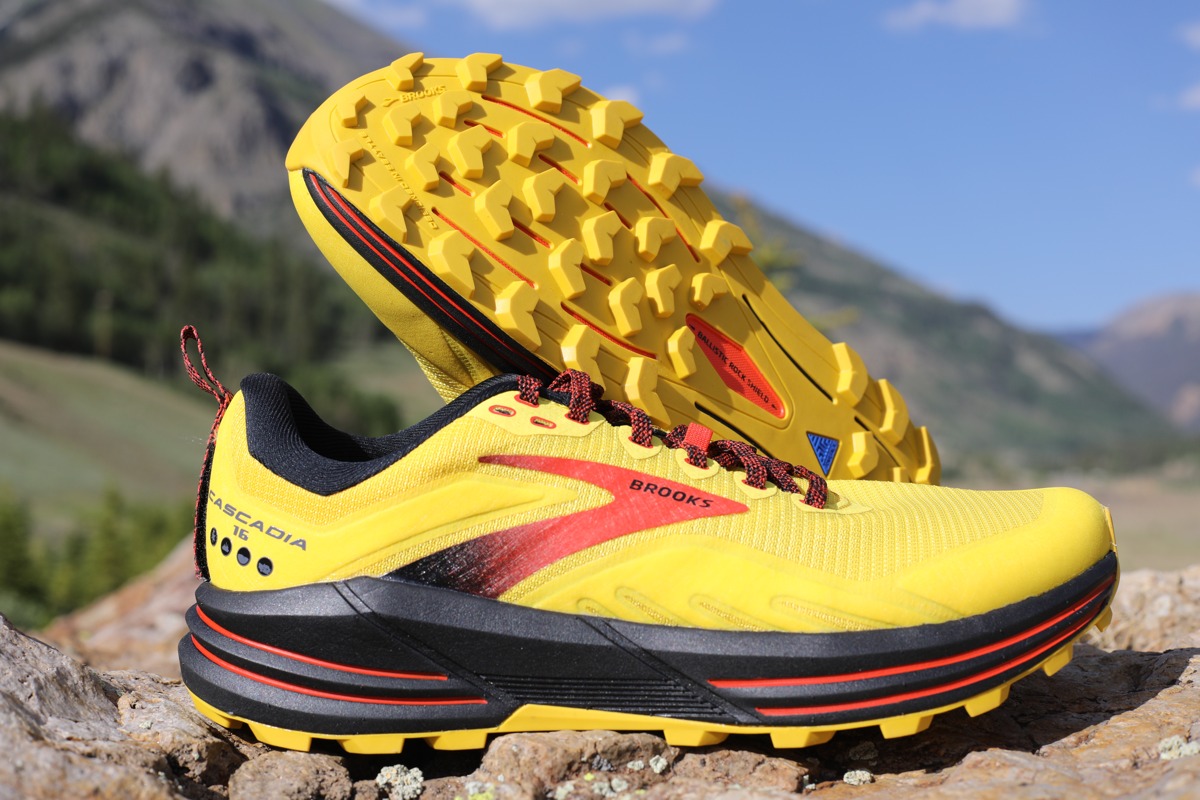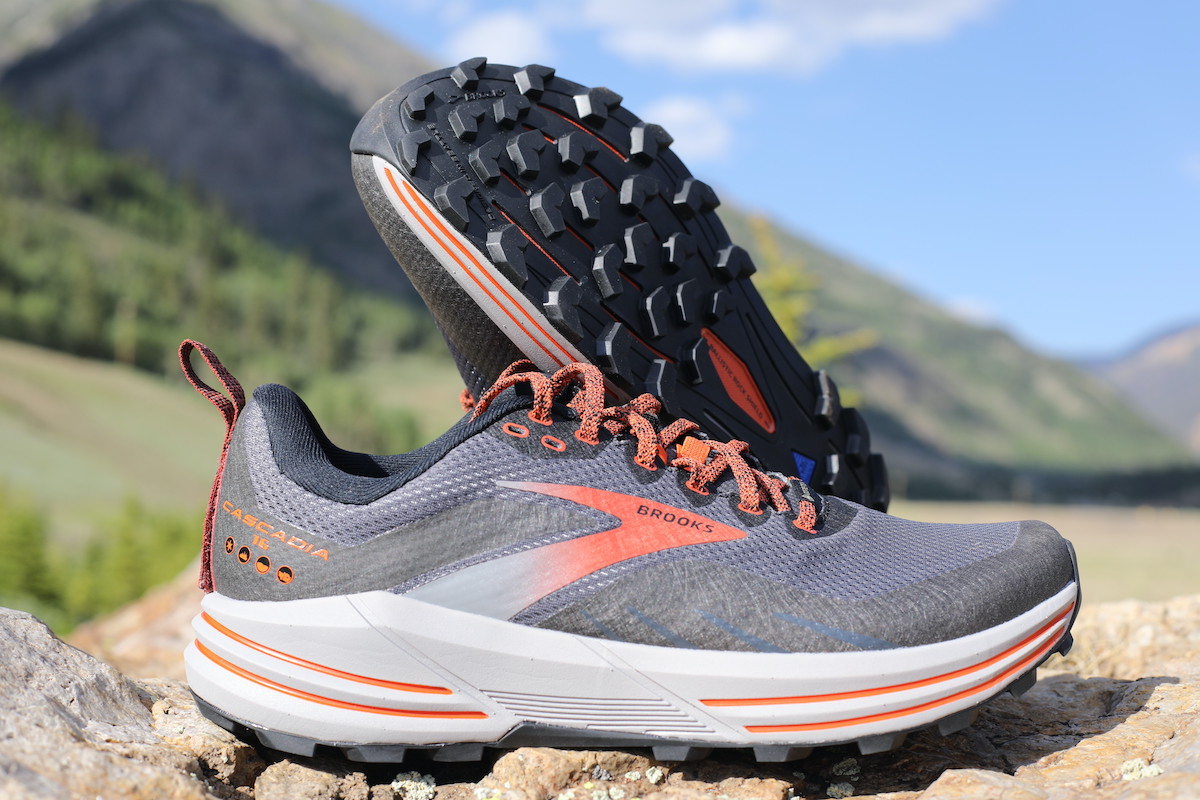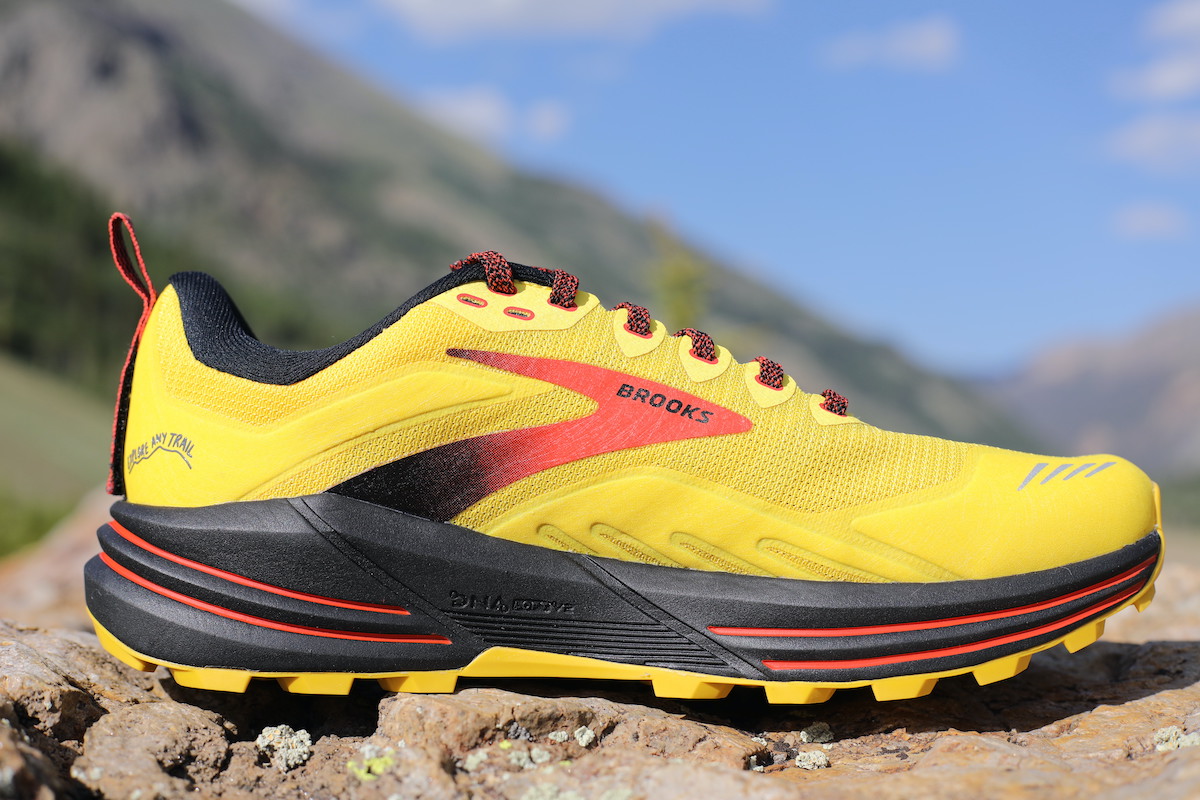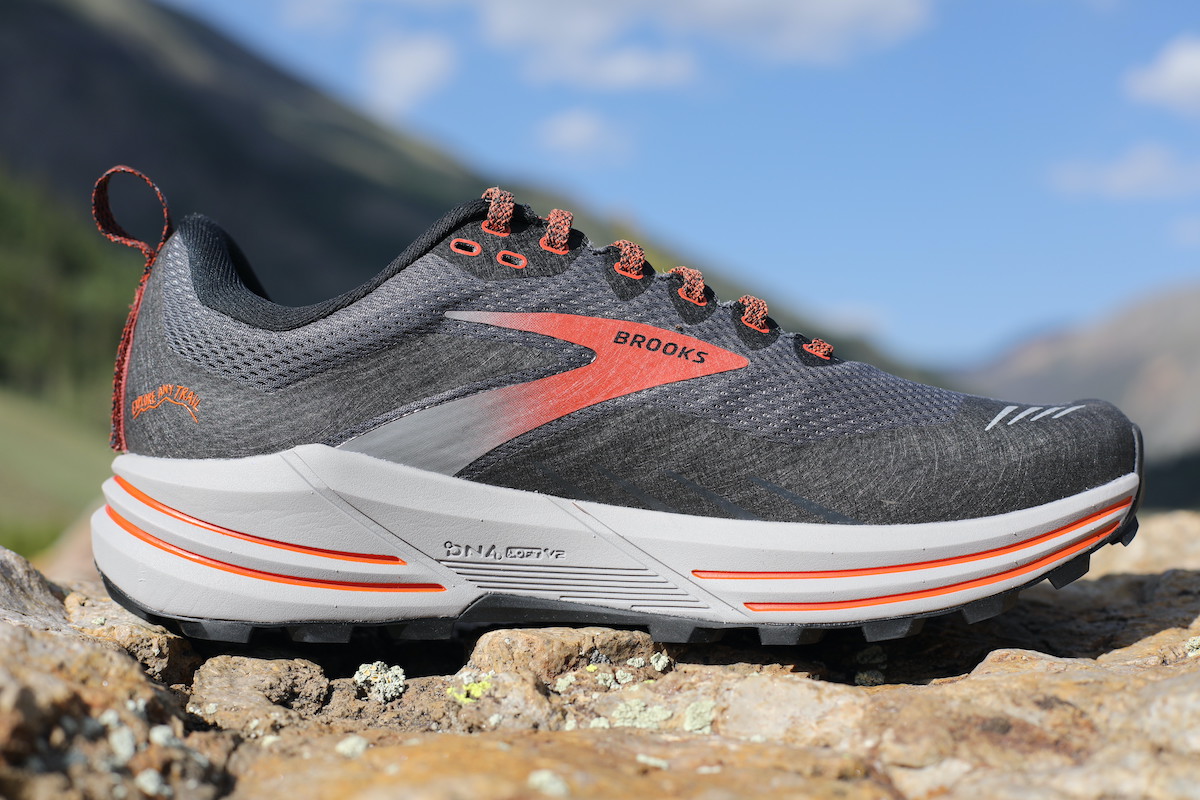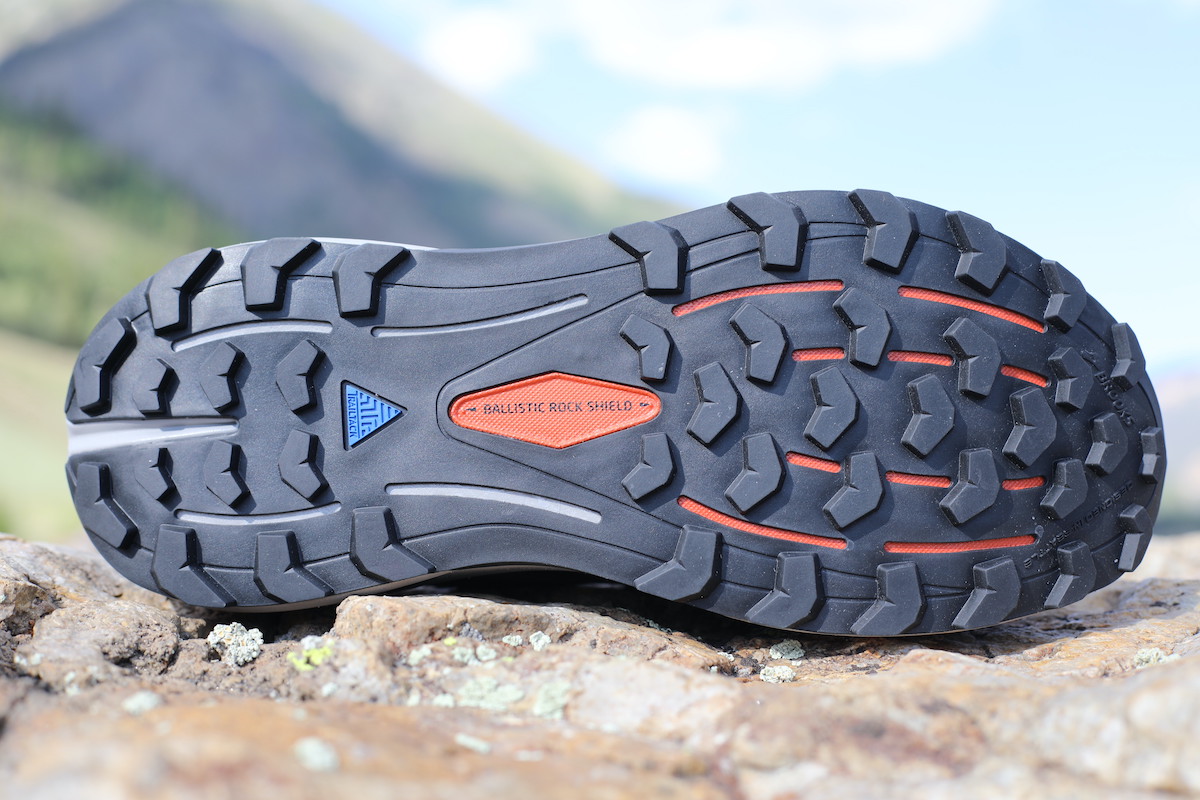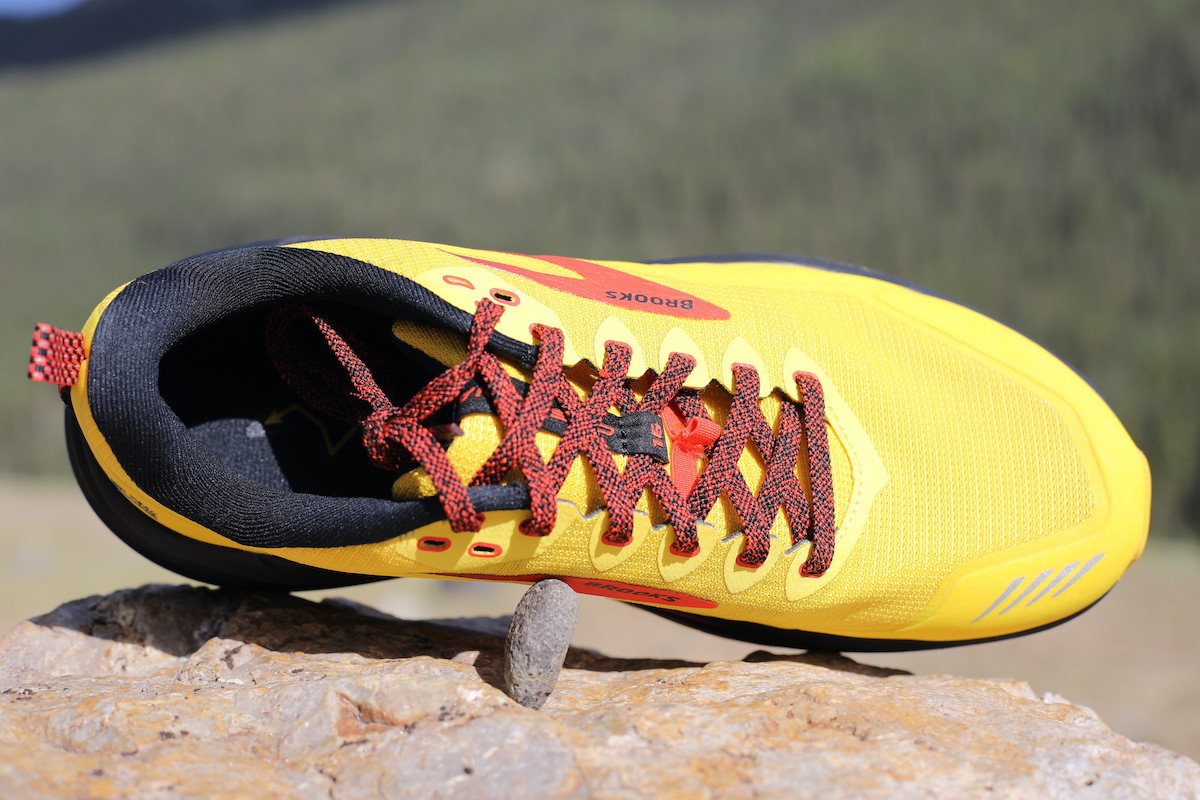Check out the most recent Cascadia in our Brooks Cascadia 19 review.
More Trail Running Shoe Options
To find more options for trail running shoes, check out our Best Trail Running Shoes article.
Brooks Cascadia 16 Standard and GTX Reviews
Brooks has historically strived to achieve “total comfort” in their line of Cascadia trail running shoes, a standard that I can happily vouch for having run through a few versions. The standard version of the Brooks Cascadia 16 ($130) debuts in August 2021, with the Brooks Cascadia 16 GTX ($160) version coming out October 2021. This new version has several impressive updates designed to keep runners as comfortable and stable as possible on variable terrain. I had the pleasure of testing both the standard and GTX models, which arrived just as my spring ultramarathon training came into full swing. The nuts and bolts of the standard Cascadia 16 and Cascadia 16 GTX are essentially identical, differentiated by the addition of Gore-Tex Invisible Fit technology, offering waterproofing for a few more dollars and fractions of an ounce. A women’s standard weighs in at 9.5 ounces, while the women’s Gore-Tex is 10.2 ounces. Fort the men, the standard version is 10.5 ounces, while the Gore-Tex model is 11.0 ounces.
The iRunFar team loves this shoe enough that we named it one of the top shoes in our best trail running shoes guide!
Shop the Women's Brooks Cascadia 16Shop the Men's Brooks Cascadia 16Shop the Women's Brooks Cascadia 16 GTXShop the Men's Brooks Cascadia 16 GTX
Brooks Cascadia 16 and Brooks Cascadia 16 GTX Upper
The upper and midsole of the Brooks Cascadia 16 have been completely refreshed. Single-layer mesh makes up the toe area. A TPU overlay and embossed mudguard add stability and protection to the heel and forefoot. The big-toe area on this model is noticeably better protected by the overlay when compared side-by-side with last year’s model. The shoes lace up easily over a gusseted tongue, and the shoe remains tied remarkably better than the Brooks Cascadia 15, due to increased texture on the laces themselves. My narrow midfoot stayed snug in the shoe, while the toe box comfortably accommodated my ever-prominent bunions. I tested women’s size 9; both versions have proven true to size.
The Brooks Cascadia 16 GTX model bonds the Invisible Fit membrane — waterproof yet breathable — directly to the upper for a light and flexible fit. Our snowpack was mostly gone by the time I was able to test the GTX model, so I cannot speak as confidently in regards to the degree of waterproofing compared to running through winter in the Cascadia 15. However, I can speak to the relative breathability of the material, as some fear their feet stifling beneath Gore-Tex. I took them out on a 90-degree Fahrenheit day on our local mountain, and my feet didn’t swelter, so I’m guessing most runners won’t have trouble overheating while running through the wet and cold conditions for which they were built. Unlike some trail-specific shoes, the Cascadia 16 does not come with a built-in gaiter. However, they do have front and back attachment points to secure gaiters if you wish to use them. Beyond being both functional and comfortable, the updates made to the upper on the Cascadia 16 make them a more attractive shoe than the previous model.
Brooks Cascadia 16 and Brooks Cascadia 16 GTX Midsole
Upgrades to the Brooks Cascadia 16 and Brooks Cascadia 16 GTX midsole are also plentiful. Brooks added two millimeters of their DNA Loft v2 foam for improved comfort. In line with previous Brooks shoes, I found them to be comfortable right out of the box, requiring no break-in time. They arrived the night before a back-to-back long-run weekend; I wore the standard version on day one and the GTX version on day two. I had no trouble making the first run in each pair around 20 miles! The stack height of the Cascadia 16 is 33 millimeters in the heel and 25mm in the forefoot, resulting in an 8mm drop.
The stability system has been updated to an accordion-esque “sidewall release geometry,” designed to operate independently from side to side and better adapt to the uneven nature of the trail. The Cascadia 16 also has enhanced stability via unique release grooves which surround the midsole and outsole, allowing the shoe to easily mold to the ground. Historically, I’ve been prone to overpronation and tend to gravitate toward more of a stabilizing shoe rather than neutral shoe. While the Cascadias have historically categorized themselves as a “neutral” versus “stability” shoe, the described features certainly encourage a stable stride. The midsole contains the Brooks trademark Ballistic Rock Shield for protection from rocks and roots, which has also been updated in this model to include vertical grooves for the purpose of providing side-to-side stability. My go-to rocky jeep road really beat up my feet before transitioning to trail shoes with rock plates. I have had no issues to report this spring while ramping up my miles and rather ironically running the Old Cascadia 50 Mile in none other than the Cascadia 16. Now, a couple hundred miles into these shoes, it seems as though they are still far from retirement.
Brooks Cascadia 16 and Brooks Cascadia 16 GTX Outsole
The TrailTack outsole has multidirectional lugs that perform well on trail and are smooth enough on road for days when you end up on a bit of both. The lugs on the Brooks Cascadia 16 and Brooks Cascadia 16 GTX appear a bit beefier than the Cascadia 15, resembling a low profile tractor tire. On the trail, I have found them to have sufficient traction for wet and dry dirt, light spring snow, and rocky jeep road. I have not had the opportunity to run this version through significant amounts of snow, however, I did prefer a more aggressive outsole for long snowy runs than my Cascadia 15 was able to provide. My area is notorious for slippery snow which requires a bit more traction and adhesion than my experience with past Cascadia versions.
Brooks Cascadia 16 and Brooks Cascadia 16 GTX Overall Impressions
The Brooks Cascadia 16 will no doubt be a crowd pleaser. “Total comfort” is hard not to love, especially when paired with good looks and, in the case of the Brooks Cascadia 16 GTX, the admirable combination of being waterproof and breathable. I appreciate the Cascadia shoes like a trustworthy commuter car, reliably fit for most terrain and a price point that most can afford. Designed to be softer and lighter than the previous model, you won’t be disappointed by Brooks’s new and improved Cascadia 16.
Shop the Women's Brooks Cascadia 16Shop the Men's Brooks Cascadia 16Shop the Women's Brooks Cascadia 16 GTXShop the Men's Brooks Cascadia 16 GTX
Call for Comments
Calling all Brooks Cascadia fans! Let us know what you think when you get your feet into the Brooks Cascadia 16 and the Brooks Cascadia 16 GTX.
[Editor’s Note: If you’re affiliated (i.e., an employee, ambassador, etc.) with a brand, please share your relation in each of your comments on this article. Thanks!]
